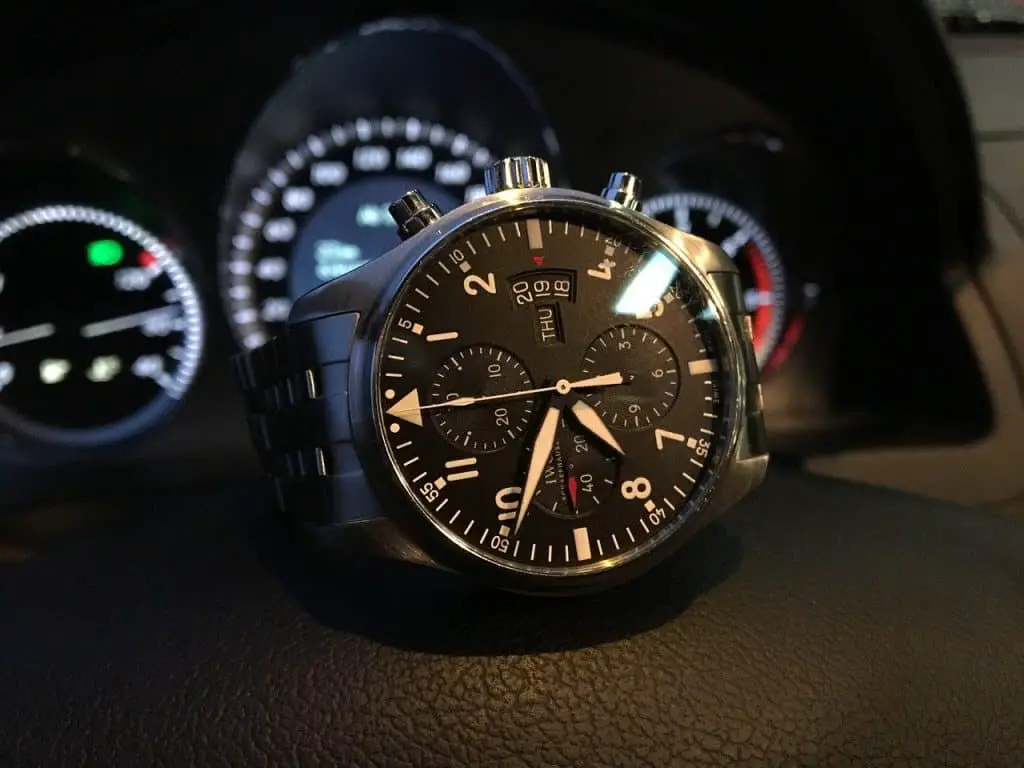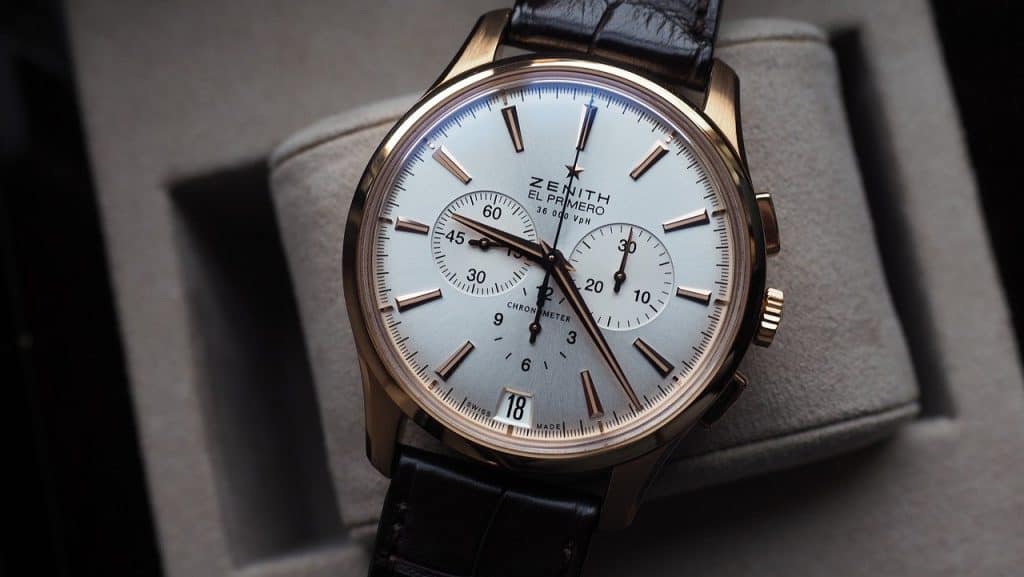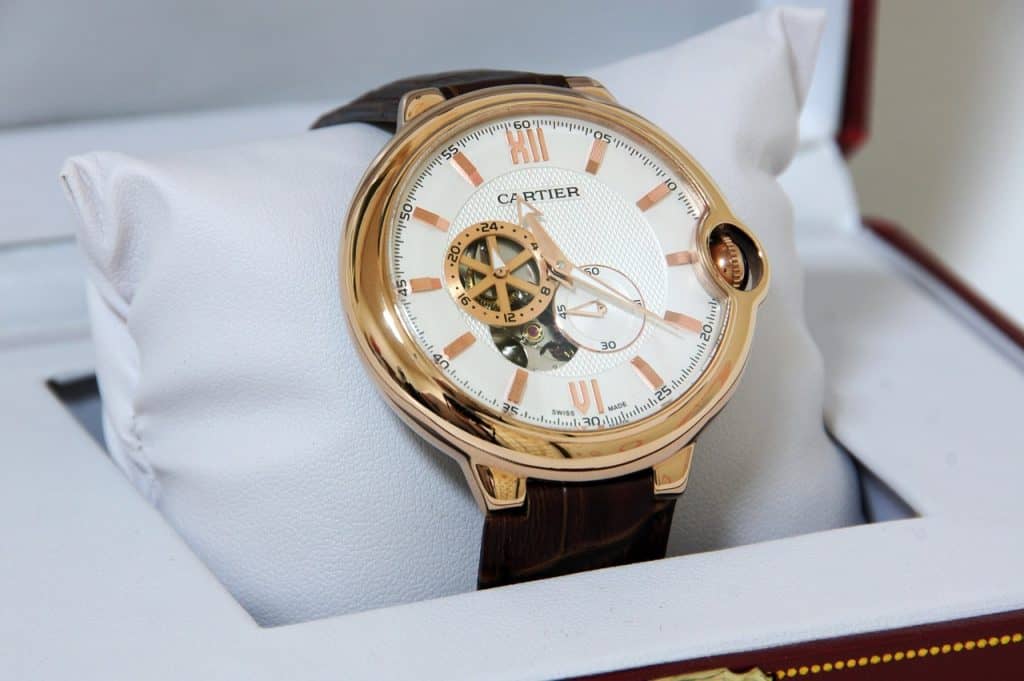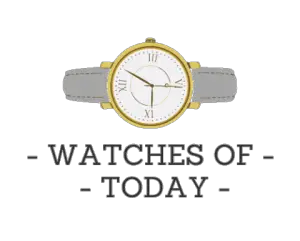Many watches nowadays display not only the time but also the month and even the date. But how does a watch know the exact date?
A watch has a date reel consisting of 31 days, which turns every 24 hours, displaying the following number/date. You will need to manually adjust the date five times per year for months with fewer than 31 days.
In essence, it’s a relatively simple process. There are 31 numbers that rotate every 24 hours, leaving you with only five manual adjustments a year. However, some timepieces have much more complex and interesting mechanics, like a perpetual calendar.

Table of Contents
How Does A Watch Keep Track Of The Date?
For some people, a watch can seem like a miraculous little accessory. It knows the time, displays it perfectly, and even shows you the date and month. And all of that in such a tiny little piece.
In general, most watches are connected to the central timepiece and have a date reel of 31 days. This date reel is connected to the central timepiece and will move with every 24 hours that pass.
As you can imagine, a watch does not know when a month has only 30 days, so every now and then, you’ll need to correct the date manually.
Most watches will feature this type of ‘Calendar Reel’, as it’s the easiest and cheapest way to go about it. However, you can find some high-end luxury watches that can keep track of all the dates without you having to adjust them manually. More on that later, though.
As mentioned before, a watch with a standard calendar reel will need to be manually adjusted from time to time. When we’re counting from January 1st, then you’ll have to manually adjust the date a total of 5 times. You will need to adjust the date on your watch on the following dates:
- March 1st, as February only has 28 days, or 29 during a leap year.
- May 1st, as April only has 30 days.
- July 1st, as June only has 30 days.
- October 1st, as September only has 30 days.
- December 1st, as November only has 30 days
Only adjusting the date a total of 5 times per year is a minor inconvenience, and with most watches, it’s a straightforward process.
It should also go without saying that a smartwatch will need no adjusting. Technology has come very far, and displaying the right time on a piece of electronics is a simple feat.
How Do You Manually Adjust The Date Of Your Watch?

Manually adjusting the date on your watch should be a relatively easy task. Your best move is to look at your watch’s manual, which will describe in detail how to adjust the date of your particular timepiece.
Some models allow you to change the date itself, while other models require you to push the time forward by 24 hours to get to the next date. Doing so will move the calendar reel to the following number. In our case, it will go from 31 back to 1, the correct date!
However, if you don’t have a manual, here is how you can change the date on your watch:
- Pull out the crown a bit. The crown is the small ‘knob’ on the side of your watch. You can carefully pull this out a bit.
- Start turning the crown clockwise. Turning it clockwise will set forward the time, and once you’ve passed 00:00, the next date should display. Then you just need to set the correct time again.
- Always avoid turning the crown counter-clockwise. Turning the crown counter-clockwise can damage the mechanism in the watch, which you would want to avoid at all costs.
- Push the crown back in.
The Mechanics Of A Watch Displaying The Time
Of course, the mechanism inside a watch is highly complicated, but most watches follow a similar sort of structure.
All watches function on a movement. This can either be a quartz movement, an automatic movement, or a mechanical movement, but the movement is essentially the part that tracks the time.
Connected to this central piece is a reduction gear train, which is connected to the calendar reel. When the movement pushes forward the time, the gear train slowly pushes forward the calendar reel. After 24 hours, the calendar reel is pushed far enough that it will now show the following number, which is tomorrow’s date!
Since the gear train is connected to the central movement, the calendar reel will also move if you manually wind the watch. It’s all a relatively straightforward process, but seeing it all play out in such a tiny object is mindblowing!
The Exceptions; Annual And Perpetual Calendars
Besides the standard calendar reel we discussed, there are two more options, usually (not always, though!) found in higher-end watches; an annual calendar and a perpetual calendar.
These are two more sophisticated options that require much less manual adjusting. This, of course, comes with a higher price.
An Annual Calendar
An annual calendar can keep track of both 30 and 31-day months. In essence, this means that you’ll only need to manually adjust your watch’s date once a year. This will be on March 1st, as we just got out of the 28-day month of February.
A watch with an annual calendar will display the date, day, and month with minimal need for adjusting. It can track both 30 and 31-day months, leaving you with only one needed adjustment at the start of March.
This is, of course, a great feature and definitely takes away some of the hassles. Even though manually adjusting it five times per year is a minor inconvenience, only needing to change it once a year is much better.
An annual calendar is a complication not limited to the ‘luxuriousness’ of a watch. Brands like Seiko (which is not a luxury watch brand) have some models with an annual calendar, but so do the highly luxurious brands of Patek Philippe and Rolex.
A Perpetual Calendar
A perpetual calendar is an even more advanced version that knows not only every month but also every year. And with every year, we mean every year, including leap years. At least, that is for the next 100 years.
What this means; a watch with a perpetual calendar won’t need to be adjusted, in our case, since we’re writing the article in 2020 until 2120. It will automatically adjust for every month, including February, and it will even know when it’s a leap year, adjusting correctly for that as well!
Watches with a perpetual calendar are set during the production process, so that’s the point from where they start ‘ticking’. By manually setting the watch, the manufacturer can ensure that the watch is set correctly for the next 100 years.

A watch with a perpetual calendar will know all the dates, months, and years for the next 100 years. It will correctly display every month, including February, and it will even adjust for a leap year. This leaves you with a total of zero manual adjustments until 2100.
A perpetual calendar is, of course, the best sort of watch calendar you can get. It leaves you with zero manual adjustments until 2100, taking away even the slightest of inconveniences.
But with such a highly complex feature comes a high price. Unlike annual calendars, perpetual calendars are typically only found in high-end timepieces. Think of brands like Jaeger LeCoultre, Patek Philippe, or Audemars Piguet.
What Watches Have An Annual Calendar?
As mentioned before, watches with an annual or perpetual calendar come at a much higher cost. These costly features are frankly too complicated and advanced to put in mass-produced fashion watches.
Here are a couple of watch models that feature an annual calendar:
- Patek Philippe Anual Calendar
- Omega Seamaster Aqua Terra
- Longines Master Collection
- A. Lange & Söhne 1815 Annual Calendar
- IWC Portugieser
- Rolex Sky Dweller
From this list, you can already see that an annual calendar does not come cheap. Brands like Patek Philippe and A. Lange & Söhne are known for being incredibly luxurious and exclusive. And this exclusivity is typically reached by a low production rate, but, more importantly, an extremely high price.
Some of the more affordable options on this list are the Omega Seamaster Aqua Terra ($5000+) collection and the Longines Master Collection ($3000+).
What Watches Have A Perpetual Calendar?
Annual calendars are already advanced pieces of technology, but sometimes, they’re referred to as a poor man’s version of a perpetual calendar. While I do not wholeheartedly agree, I do agree with the fact that a perpetual calendar sits in a league above.
Here are a couple of watch models that feature a perpetual calendar:
- Audemars Piguet Royal Oak
- Jaeger LeCoultre Master
- Patek Philippe Grand Complication
- A. Lange & Söhne Langematik
- Seiko Astron
- Frederique Constantin Highlife
- IWC Portugieser
- Longines Conquest
The names in this list have a lot of similarities to the ones listed for annual calendars, and that’s because both are high-end features found in high-end brands.
The one outlier in this list is the Seiko Astron. Seiko is an incredible watchmaker, but not quite a luxury watch brand. Seiko prides itself on offering affordable but fantastic-quality timepieces. But as you can see, they’re neither shy nor incapable of producing high-end timepieces with high-end complications.
Closing Words
Watches are amazing accessories. They look great, are functional, and there’s a lot of craftsmanship behind them.
A watch displays the date with the help of a calendar reel. This calendar reel is connected to the central timepiece and moves the time. After every 24 hours, the reel will have turned enough to show the next date.
Your standard calendar reel will have 31 days, which means you need to adjust the date five times per year manually.
However, there are also options that require much less adjusting. A watch with an annual calendar will need to adjust only one time per year, at the end of February. There’s also an option that only needs adjusting once per 100 years. This option is called the perpetual calendar.
